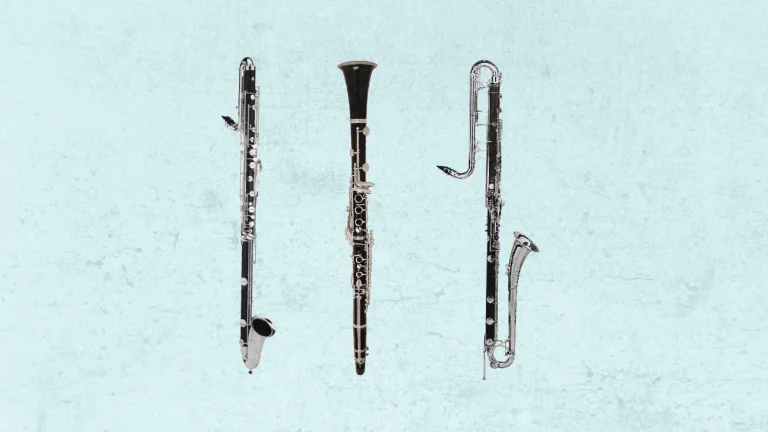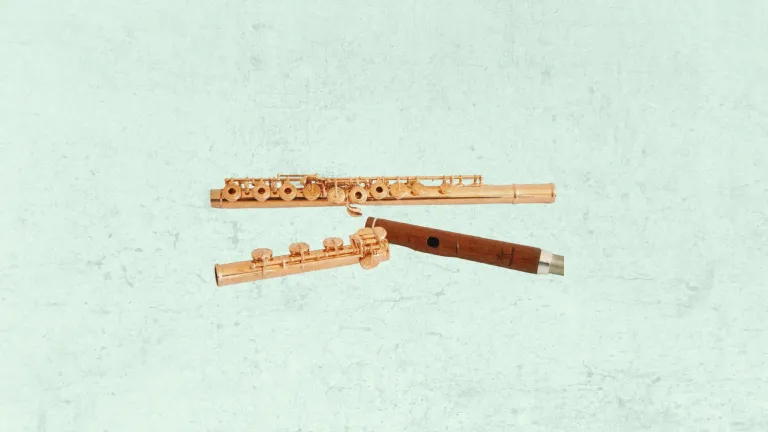Woodwind instruments produce sound by blowing air through a mouthpiece, which makes a reed or air column vibrate.
Every instrument in this family plays an important role in orchestras and bands with their unique sounds.
But what exactly are woodwind instruments and how do they work? I will explain every detail about woodwind instruments in this article.
Which Instruments Are Members Of The Woodwind Family?
There are several types of woodwind instruments and they differ by their mechanism for producing sound.
- Flutes create sound by blowing air into a hole in the mouthpiece.
- Single-reed instruments, like clarinets and saxophones, use a single reed attached to a mouthpiece to create sound.
- Double-reed instruments – oboes and bassoons – have two reeds bound together. They vibrate against each other when air is blown between them.
Flutes

Flutes make bright, clear tones and have expansive range, spanning over three octaves. Their cylindrical shape and open design make it easy to play and move around with. They are great for different types of music like classical, jazz, and folk.
If you are interested, check out some of the best flutes.
Clarinets

Known for their rich, warm tone and wide dynamic range, the clarinet offers a blend of color and expression. The clarinet has a unique sound that can be mellow or vibrant. It is loved in classical music, jazz, and more.
I have a list of the best clarinets and you can choose any instrument from that list.
Saxophones
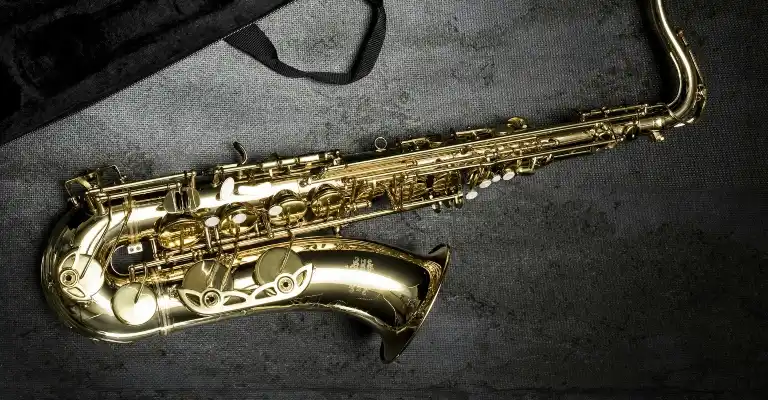
Saxophones have brass bodies and single reed mouthpieces. They make a powerful, resonant sound that spans a wide range of pitches. Available in various sizes, saxophones are versatile and expressive instruments. They are used in thousands of popular songs.
Check out my list of best saxophones.
Oboes
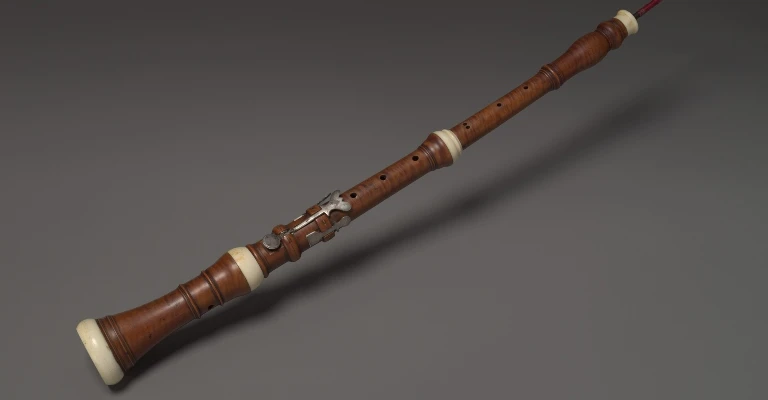
Oboes have a special sound that is nasal and expressive. It is a double-reed instrument with a conical bore. Their sound is noticeable in music because of its sharp highs and smooth lows.
Bassoons
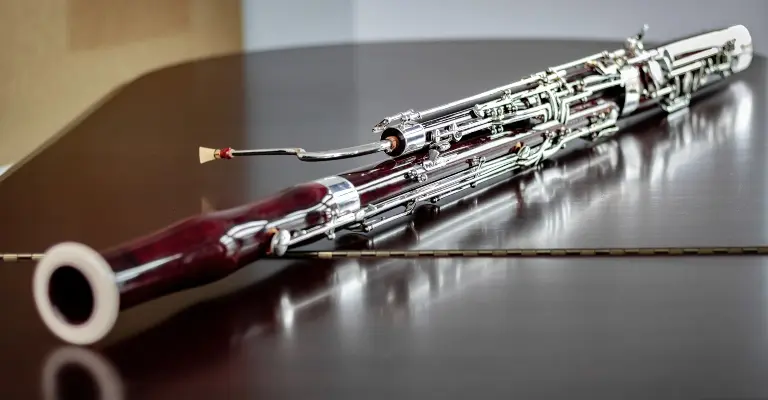
Bassoons have deep, resonant tones and agile capabilities. They fill the lower register of the woodwind section. A bassoon creates a deep, smooth sound with its double reed mouthpiece and long, curved bore, adding depth to orchestral and ensemble music.
How Woodwind Instruments Produce Sound?
Woodwind instruments produce sound by combining physical principles and human techniques. Although the mechanisms differ among various types, they all have common things in sound generation.
- Flutes and Piccolos make a sound with the vibration of the air column inside. When a player blows air in the hole, the airflow creates areas of high and low pressure within the instrument’s cylindrical bore. The embouchure – shape of lips – and airflow, determines the pitch and tone quality of the sound produced.
- Clarinets And Saxophones use a single reed attached to the mouthpiece. When the player blows air through the mouthpiece, the reed vibrates against the mouthpiece, creating sound waves. These sound waves travel through the body, where they are amplified and shaped by the acoustics of the bore and tone holes. Embouchure, fingerings, and breath control have an impact on the pitch, dynamics, and timbre of the sound produced.
- Oboes And Bassoons have two reeds bound together at the top of a narrow tube called the staple. When you blow air between the reeds, they vibrate against each other, creating sound waves. These sound waves resonate within the instrument’s conical bore. The result is the characteristic timbre of the oboe or bassoon.
What To Know About Woodwind Instruments
Here are some useful information you should know about woodwind instruments. I will explain the construction, playing technique, characteristics and more.
Materials And Construction
Traditionally, woodwind instruments were crafted from wood, such as ebony, grenadilla, or boxwood. But modern woodwinds use metal or plastic, which are more durable and consistent in sound production.
The construction, including the shape of the bore and the placement of tone holes, influences its tone quality and playability.
Playing Techniques
Playing a woodwind instrument requires mastering a variety of techniques. This includes proper embouchure, fingerings, articulation, and breath control.
If you want to know more about how to play woodwind instruments, I have several guides:
Musical Styles
Woodwind instruments are featured in a wide range of musical genres and styles. You can hear them in classical, jazz, folk, and popular music. Woodwinds play a vital role in shaping the sound and texture of musical compositions.
I love the sound of woodwind instruments. I’m delighted when I hear for example a saxophone in a song. They are very versatile musical instruments and you can use them in any genre you like.
Role In Orchestra
In ensembles and orchestras, woodwind instruments fulfill various roles. Woodwind instruments in orchestras frequently offer both melody and harmony. In jazz bands, they may be used for solos or as a texture.
Also, woodwind instruments play an important role in chamber music, wind bands, and marching bands.
Maintenance And Care
Proper maintenance is essential for keeping woodwind instruments in optimal playing condition. Regular cleaning, lubrication of key mechanisms, and storage in a protective case help prevent damage.
Also, systematic checks by a skilled instrument technician can find and fix problems before they get worse.
There are different cleaning kits for saxophones or other woodwind instruments. You can get them at the music stores and learn to clean your instrument.
Conclusion
As you can see, a woodwind family of instruments includes very interesting musical instruments. Each of them differs by sound and characteristics. They are used in various genres of music and add additional flavor to songs. You can learn more about saxophones, clarinets, and flutes on WoodWindy.
